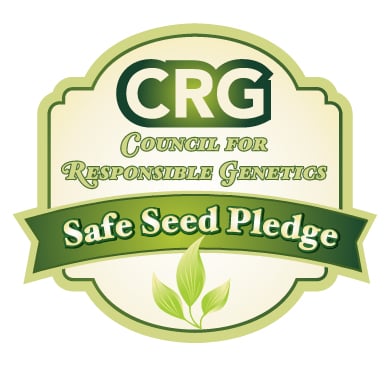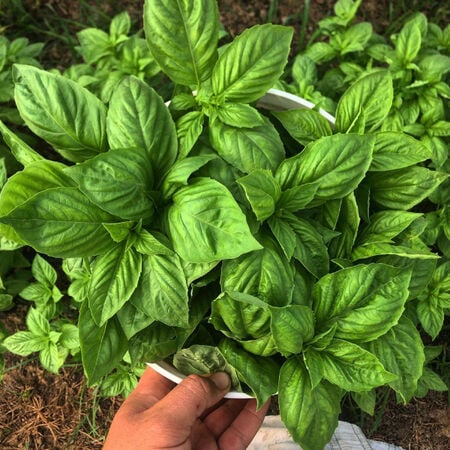Nufar, Organic Basil Seeds
Out of Stock
Key Attributes
Key Attributes
Product Details
Weight
1Plant Height
24-30"Botanical Name
Ocimum basilicumSeed Type
SeedPacket
200 seedsSow Depth
1/4"Disease Resistance
Fusarium WiltSeeds Per Ounce
18,400Breed
Organic, Open-polliantedLife Cycle
AnnualSow Method
TransplantCategories
HerbDays To Maturity (# Days)
74Components
Growing Instructions
![]() Learning Download: How to Grow Basil
Learning Download: How to Grow Basil
Herbs grow quickly and are easy to grow in pots on a porch if there is limited garden space. Basil comes in many different options with flavors from sweet to spicy.
Before Planting: Basil grows best in warm weather, and basil seeds should be planted after all dangers of frost have passed.
Planting: Plant seeds 1/4 inch deep and 12 inches apart. Seeds can be started indoors to get a head start on growing the herb. Plant indoors six weeks before the last frost date and place in a sunny windowsill. Plant in moist soil that is well-drained. If planting in a container, use a larger pot to prevent plants from drying out in the summer heat.
Watering: Water Basil frequently during dry periods.
Fertilizer: Upon planting, add organic nutrients to the soil such as compost, blood meal or cottonseed meal. Feed with liquid plant food every few weeks to encourage growth, but be sure to not use fertilizers that leave a harmful residue since you will be consuming the leaves.
Days to Maturity: Basil leaves can begin to be harvested once the plant is 6 to 8 inches tall, typically 60 to 90 days after planting the seeds.
Harvesting: Picking leaves regularly encourages more growth. Harvest the leaves by pinching them off of the stem, and always harvest from the top of the plant. Basil can be frozen to preserve its flavor, used fresh or dried.
Tips: The biggest threat to a basil plant is root rot from poor drainage, so ensure the planting site has adequate drainage. Also, watch out for pests such as aphids, slugs or Japanese beetles.
Shipping Schedule
Our Seed Promise
 "Agriculture and seeds" provide the basis upon which our lives depend. We must protect this foundation as a safe and genetically stable source for future generations. For the benefit of all farmers, gardeners and consumers who want an alternative, we pledge that we do not knowingly buy or sell genetically engineered seeds or plants.
"Agriculture and seeds" provide the basis upon which our lives depend. We must protect this foundation as a safe and genetically stable source for future generations. For the benefit of all farmers, gardeners and consumers who want an alternative, we pledge that we do not knowingly buy or sell genetically engineered seeds or plants.
The mechanical transfer of genetic material outside of natural reproductive methods and between genera, families or kingdoms, poses great biological risks as well as economic, political, and cultural threats. We feel that genetically engineered varieties have been insufficiently tested prior to public release. More research and testing is necessary to further assess the potential risks of genetically engineered seeds. Further, we wish to support agricultural progress that leads to healthier soils, to genetically diverse agricultural ecosystems, and ultimately to healthy people and communities.
To learn more about the "Safe Seed Pledge" please visit www.councilforresponsiblegenetics.org.

